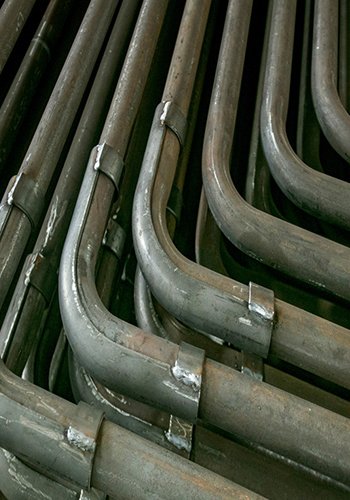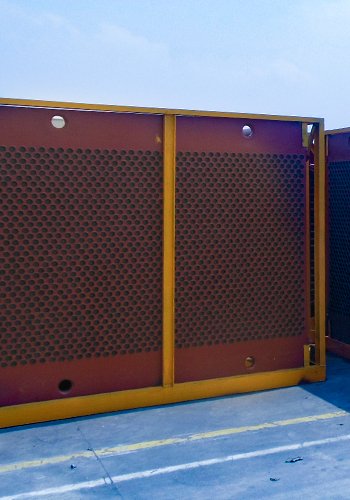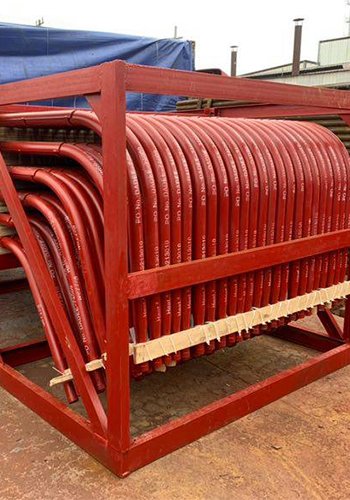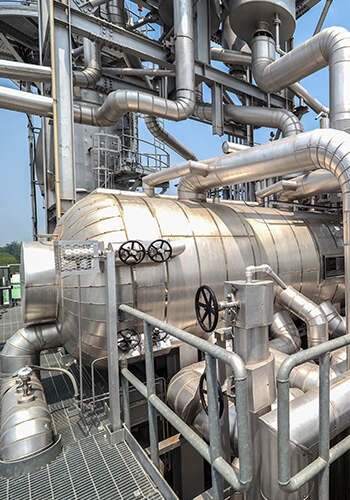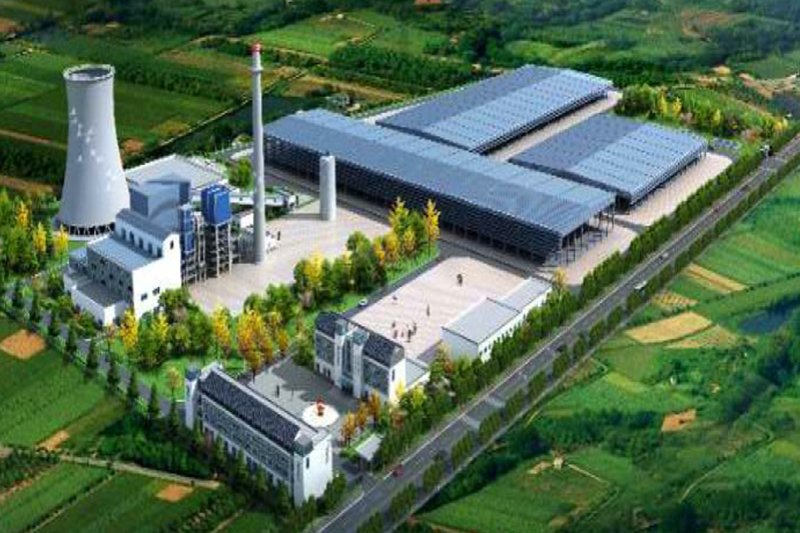The intense vibration of boiler pipelines can cause equipment damage, affect the safe operation of power generation units, and even pose a threat to the personal safety of workers. When the power generation unit is operating, it is necessary to closely monitor the vibration of the pipelines. If abnormal vibrations occur, it is necessary to identify the cause and take measures to control the vibration within the acceptable range. Similarly, abnormal vibrations of the boiler pipelines after the shutdown of the boiler can also have a serious impact on the equipment. This paper analyzes the phenomenon of severe vibration of the boiler pipelines after the shutdown of the waste heat recovery boiler, identifies the causes of the boiler pipeline vibration, and takes corresponding technical measures to solve the problem of abnormal vibration of the boiler pipeline.
Common Vibrations in Power Plant Operations The occurrence of steam and water pipeline vibration is a common phenomenon during power plant operations. Equipment operation inevitably leads to some level of vibration, which is currently unavoidable from both a technical and economic standpoint.
Impact of Excessive Vibration Excessive vibrations pose a significant threat to equipment operation and the personal safety of workers. In extreme cases, they can result in the complete shutdown of power plant operations. It is important to address these issues to maintain the safety and efficiency of power generation.
Research on Boiler Operation Vibration Domestic scholars have extensively studied the various vibration issues that arise during boiler operation. For instance, Li Changzheng and colleagues [1] discovered that the significant vibration in the boiler feedwater pipeline was due to poor installation practices and the absence of intermediate gaskets.
Factors Influencing Vibration and the Need for Further Research Wu Xiangchao [2] attributed large boiler vibrations to the transmission caused by fans, impacting both primary and secondary air and air ducts, with boiler structural defects exacerbating these vibrations. Other studies, such as those by Yuan Meiyan et al. [3] and Li Weiwei et al. [4], have identified combustion instability and incorrect fixing devices as causes of boiler vibrations. However, most of these studies focus on operational periods, and there is a gap in research regarding vibrations that occur after the boiler has been shut down. This paper aims to fill that gap by investigating the causes of significant pipeline vibrations post-shutdown and proposing effective solutions.
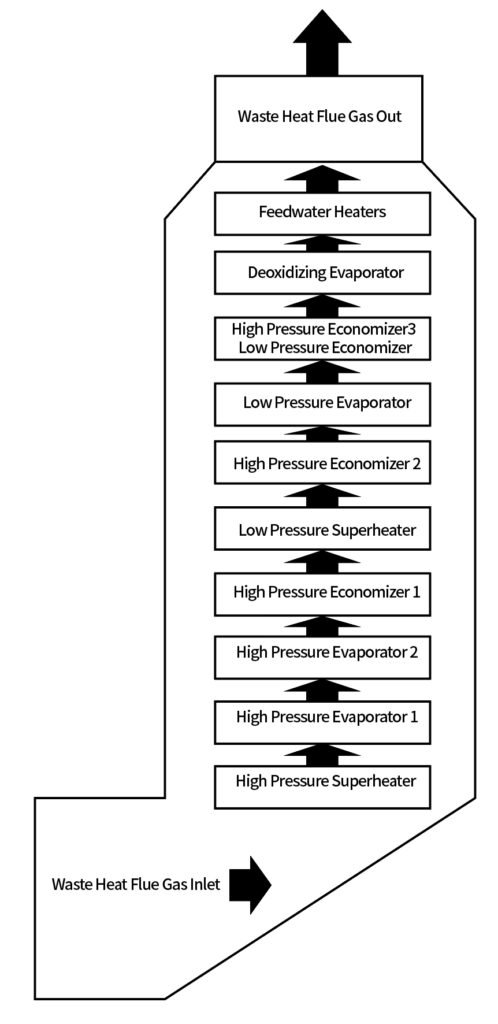
Figure 1 Schematic Layout of Boiler Heat Surface
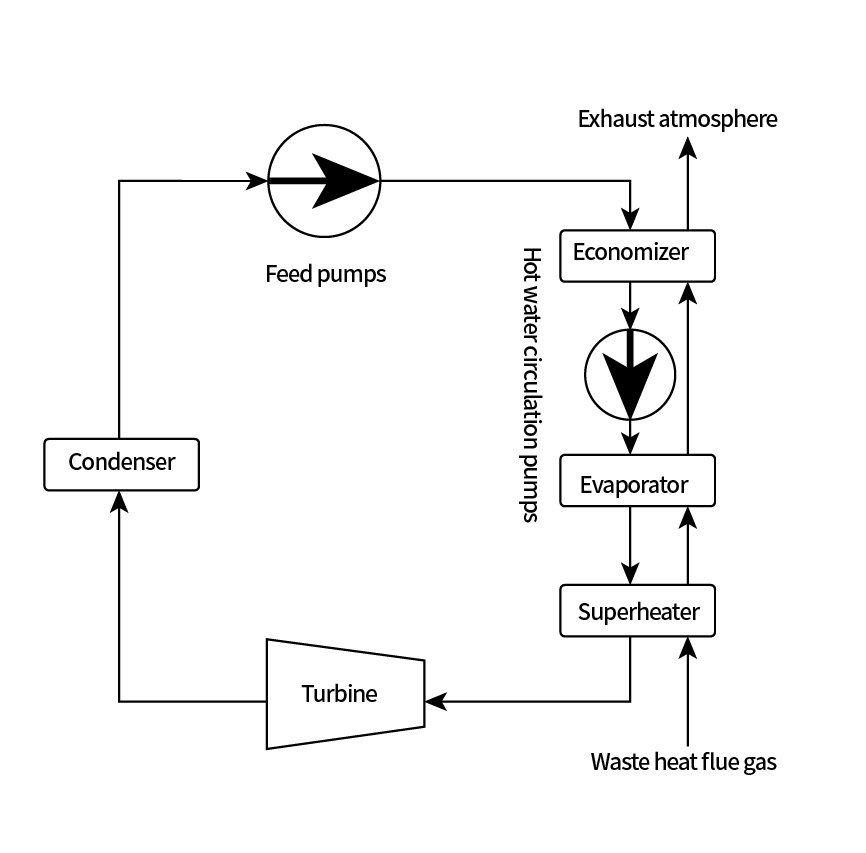
Figure 2 Schematic of Boiler Steam and Water Flow Process
Investigation into Post-Shutdown Pipeline Vibration of Waste Heat Recovery Boiler
Occurrence of Pipeline Vibration Post-Shutdown Approximately three days after the shutdown of a Waste Heat Recovery Boiler, instances of boiler pipeline vibration were observed. With both high and low-pressure drum pressures at zero, the pipeline emitted a low-pitched water hammer sound that intensified over time.
Identification and Impact of the Vibration Source Upon inspection, the source of the vibration was traced to the pipeline extending from the high-pressure feedwater to the high-pressure economizer. The most significant vibration and noise occurred at the pipeline bend beyond the feedwater regulating valve, reaching a maximum amplitude of 5 mm, which impacted and damaged the pressure gauge on the pipeline.
Mitigation Measures and Their Effectiveness Initiatives were taken by starting the high-pressure feedwater pump and opening the feedwater regulating valve to replenish the high-pressure economizer, evaporator, and drum. The drum exhaust valve was opened, the high-pressure hot water circulation pump was activated, and the recirculation pipeline was opened to enhance the flow of the working medium. These measures led to a gradual reduction in pipeline vibration, with the maximum amplitude decreasing to less than 10 μm after one hour, confirming the effectiveness of the implemented actions.
2. Vibration Cause Analysis
After the normal shutdown of the boiler, the water level of each drum was replenished to +200 mm and then stopped. The hot water circulation pump was stopped, and the water replenishment valve was closed. During the shutdown period, no pressure relief drainage operation was performed. Apart from the exhaust cooling by the gas turbine within 18 hours after the shutdown, the boiler has been naturally cooled. The temperature inside the boiler gradually cooled down, and the drum pressure dropped to atmospheric pressure. Under this shutdown condition, the boiler pipeline vibrated significantly, and the analysis identified the following two reasons.
Boiler Drum Water Level Abnormally Low
Although the water level of each drum was replenished to more than +200 mm immediately after the shutdown, the working medium inside the drum was much higher than the ambient temperature. According to the second law of thermodynamics, a high-temperature object will spontaneously transfer heat to a low-temperature object until their temperatures are consistent. Therefore, the working medium inside the drum will release heat to the environment over time, and its temperature will gradually decrease, and the pressure and specific volume of the working medium will also decrease accordingly. Even without water discharge operations, this will also cause the drum water level to continue to decrease. When the water level inside the drum drops to -1200 mm from the center of the drum (as shown in Figure 3), the horizontal surface will approach the height of the economizer inlet pipe. The section of the horizontal pipe from the feedwater pipe to the economizer inlet pipe is sealed at both ends by water and is relatively high, forming an inverted U-shaped structure. When the water level continues to drop, this section of the horizontal pipe will change from a completely water space to a partially water space, forming a local vacuum. The saturation temperature of the water in the pipe will be lower than the saturation temperature under atmospheric pressure, that is, the temperature will not reach 100°C, and it will also vaporize into steam.
Boiler Internal Heat Rises
During boiler operation, the temperatures of various high-pressure heat-absorbing surfaces are as shown in Table 1, with the highest temperature in the high-pressure superheater and the lowest in the high-pressure economizer 3. After three days of natural cooling following the shutdown, these temperature distributions change. The originally highest temperature, the high-pressure superheater, becomes the lowest (only 22°C), while the originally lowest temperature, the high-pressure economizer, still has 93°C. During the same period of natural ventilation cooling, it can be seen that the temperature in the upper part of the boiler drops much faster than that in the lower part. This is due to the chimney effect of the boiler, which causes the hot air in the lower part of the boiler to be lighter and rise to heat the upper part of the boiler, while the cold air from the environment enters the lower part of the boiler for cooling, resulting in better insulation effect in the upper part and worse in the lower part.
Figure 3 Schematic Diagram of Boiler Pipeline
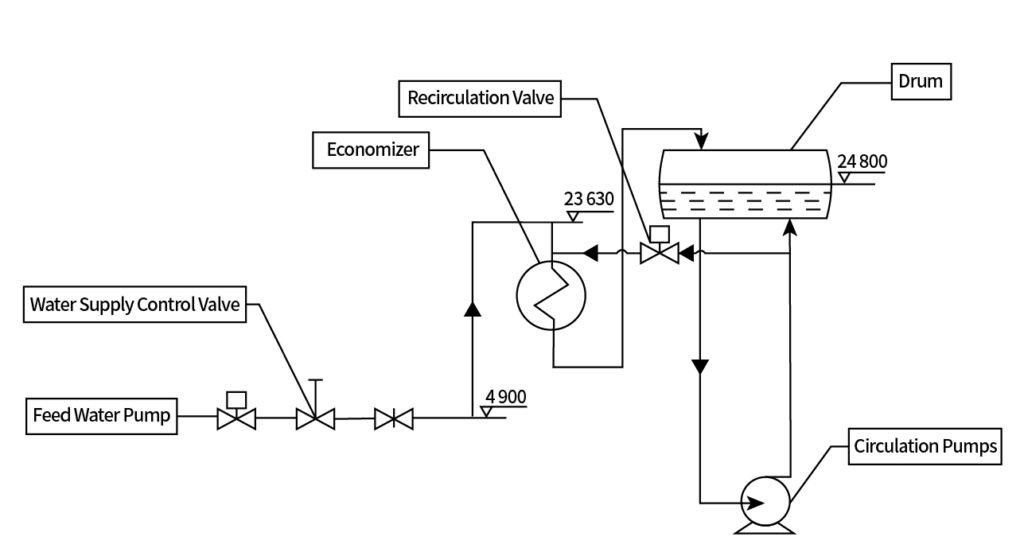
Table 1 Temperature of Various Heat-Absorbing Surfaces Inside the Boiler
| Heat Absorbing Surface | Vibration Temperature / °C | Operating Temperature / °C |
|---|---|---|
| High-Pressure Superheater | 22.2 | 568.0 |
| High-Pressure Evaporator 1 | 50.8 | 459.9 |
| High-Pressure Evaporator 2 | 90.1 | 307.1 |
| High-Pressure Economizer 1 | 101.2 | 276.0 |
| High-Pressure Economizer 2 | 101.6 | 259.3 |
| High-Pressure Economizer 3 | 93.7 | 166.0 |
Pressure Pulsation Forcing Pipeline Vibration
Analysis of Pipeline Vibration in Waste Heat Recovery Boiler Systems
1. Vaporization and Stratification in Waste Heat Recovery Boiler Piping
The two identified factors lead to the vaporization of the working medium within the horizontal section of the high-pressure economizer inlet pipe of the waste heat recovery boiler. This process creates a steam-water stratification. The heat transfer from the furnace to the working medium results in an increase in steam volume and bubble growth, raising local pressure and propelling the working medium towards the economizer and feedwater pipe.
2. Pressure Increase and Thermodynamic Changes in Waste Heat Recovery Boiler
With the high-pressure feedwater valve closed, the equivalent pressure at the economizer inlet and the connected feedwater pipe increases. As the heating section’s working medium is pushed to both ends, heat exchange occurs, leading to a temperature drop and a change in the thermodynamic state of the working medium. This disrupts the energy balance within the pipe, causing the internal pressure to fall below average and the working medium’s temperature to reverse direction.
3. Periodic Pressure Pulsations and Their Impact on Waste Heat Recovery Boiler Piping
The repeated cycle of the aforementioned process results in periodic pressure pulsations. These pulsations, originating from the waste heat recovery boiler’s operation, act as a vibration source. They force the pipe to vibrate and transmit these vibrations throughout the entire feedwater pipeline. The bends in the feedwater pipe, with their unique features such as curvature, throttling, and varying diameters, alter the pressure and momentum vector of the working medium. This alteration intensifies the vibration effect, particularly increasing the amplitude at the bends of the feedwater pipe.
The root cause of the feedwater pipe vibration after the boiler shutdown is the low water level in the steam drum, forming a local vacuum inside the pipe, and the heat rise inside the boiler. The combined action of these two factors causes the working medium inside the pipe to vaporize, forming pressure pulsations and forcing the pipe to vibrate.
3. Treatment Effects and Prevention Suggestions
The pipeline vibration is caused by the combined action of the low water level in the steam drum and the heat rise inside the boiler. Removing either one can interrupt the reaction chain that causes the pipeline vibration. We took measures against the low water level in the steam drum, starting the feedwater pump and hot water circulation pump to replenish and circulate water in the steam drum, gradually raising the water level in the steam drum, filling the feedwater pipe with water, and increasing the saturation temperature of the working medium inside the pipe, fundamentally eliminating vaporization. After more than an hour of water circulation, the vibration and water hammer sound of the boiler feedwater pipe gradually weakened, and the maximum amplitude of the pipeline was reduced from 5 mm to below 10 μm, controlling it within the normal range and verifying the effectiveness of the measures taken.
Wang Leqin et al. [8] proposed to control the pressure pulsation in the pipeline flow to reduce or suppress the pressure pulsation; or to adjust the structure of the pipeline system, change the vibration frequency, and make it not produce mechanical resonance to solve the pipeline vibration. Combining these ideas for solving vibration, the following suggestions are made to prevent pipeline vibration after the boiler shutdown in the operation and production aspect:
(1) Maintain the boiler steam drum water level not lower than -270 mm after the boiler shutdown, and replenish water in time when the water level drops.
(2) Appropriately open the superheater drain valve to gradually reduce the steam pressure and slow down the cooling of the boiler. When the steam drum pressure drops to 0.3~0.5 MPa, the furnace water temperature does not exceed 80°C, and the furnace water is drained.
(3) Appropriately reinforce the support and hangers before and after the bend of the feedwater pipe to limit the vibration amplitude of the pipeline.
(4) Install an exhaust valve on the high-level horizontal pipe section at the economizer inlet, and open the exhaust valve in time according to the cooling condition of the boiler after the shutdown.
(5) Strengthen the sealing at the connections of the lower part of the boiler and thicken the insulation layer of the lower part of the boiler.
4. Conclusion
This paper analyzes the phenomenon of pipeline vibration caused by the shutdown of a certain power plant’s waste heat recovery boiler. Due to the low water level in the boiler drum, a local vacuum is formed inside the pipe, and the heat rises inside the boiler furnace. The uneven heating causes the working medium inside the pipe to vaporize into steam, which is then vaporized again after condensation. This process is repeated, causing pressure pulsations of the working medium inside the pipe and forcing the pipe to vibrate. By increasing water replenishment and strengthening water circulation, the vibration disappears, verifying the correctness of the analysis and measures. Such issues are not only related to waste heat recovery boilers but also to boilers with similar characteristics, which are of great significance for improving the safety of boiler equipment. The deficiency lies in the fact that the research object is equipment that has been put into production, and only suggestions for preventing pipeline vibration after shutdown are made from the perspective of production operation. Subsequent improvements can be made from the aspects of design and installation.
References
[1] Li Changzheng, Wei Jiyong, Yuan Liangyi. Analysis and preventive measures of vibration causes in the feedwater system of steam boilers [J]. Industrial Boilers, 2009(4): 51-54.
[2] Wu Xiangchao. Causes of boiler vibration and its treatment [C]. Proceedings of the 5th Annual Conference of the Boiler Steel Structure Branch of the China Steel Structure Association, 2004: 48-52.
[3] Yuan Meiyan, Liu Dezhi, Zhu Hong. Analysis of power plant boiler vibration [J]. Heilongjiang Electric Power, 2001, 23(3): 182-183.
[4] Li Weiwei, Xu Wei. Analysis and treatment of vibration in waste heat recovery boiler pipelines [J]. Energy Conservation, 2014(2): 66-69.
[5] Chen Xi, Chen Hong, Xin Xianyun, et al. Energy flow model and optimization of waste heat recovery power generation system [J]. Journal of Engineering Thermophysics, 2019, 40(3): 612-620.
[6] Ding Lixin. Principles of Power Plant Boilers [M]. Beijing: China Electric Power Press, 2008.
[7] Song Junjian. Research on pipeline vibration detection of two-phase flow of gas and liquid [D]. China University of Petroleum, 2011.
[8] Wang Leqin, He Qiuliang. Vibration analysis of pipeline systems and engineering application [J]. Fluid Machinery, 2002(10): 28-31, 42.
